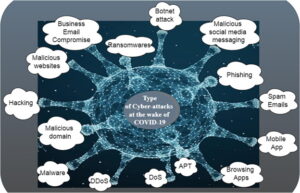The digital world is vast and intricate, often leaving those unfamiliar with its depths confused by technical terms and formats. One such entity that has garnered attention is “185.63.253.2pp.” While it might look like a standard IP address at first glance, this identifier comes with nuances that challenge conventional understanding.
This post explores what 185.63.253.2pp is, potential technical interpretations, its implications in cybersecurity, and best practices for handling similar formats. By understanding its context and potential uses, businesses and technology enthusiasts can better prepare for instances of encountering atypical network identifiers.
What Is 185.63.253.2pp?
185.63.253.2pp appears as though it might be a variation of a typical IPv4 address. IP addresses traditionally function as unique identifiers within networks, enabling devices to communicate with one another. However, the key distinction with 185.63.253.2pp lies in its non-standard suffix, “pp,” appended to a seemingly valid IPv4 sequence.
Decoding the “pp” Suffix
The addition of “pp” introduces a layer of mystery, as standard IPv4 or IPv6 address formats do not accommodate alphabetic characters. This suggests that the suffix may be a custom tag or code added for specialized purposes like internal tracking, bespoke network protocols, or experimental configurations.
Understanding what 185.63.253.2pp signifies requires examining its possible uses in network infrastructures and the implications of deviating from established IP norms.
Potential Uses of 185.63.253.2pp
While the exact meaning of 185.63.253.2pp remains speculative, its structure hints at possible scenarios where it could be employed effectively. Below are some potential uses for such a format.
1. Internal Network Management
Non-standard extensions such as “pp” could be used for internal network segmentation or configuration. For instance, organizations might append codes like “pp” to IP addresses to differentiate public-facing systems from private, internal-only resources.
2. Custom Proxy or Protocol Designation
The “pp” suffix could signify a custom proxy or protocol designation within a controlled network environment. For example, servers handling specific traffic, such as secure data transfers via specialized ports, might use unique tags to simplify routing or monitoring.
3. Security Obfuscation
Some organizations might deliberately use non-standard IP formatting as a security mechanism. By generating a format like 185.63.253.2pp, they can obscure a network’s true structure and introduce hurdles for malicious actors attempting automated attacks or reconnaissance.
Technical Interpretations of 185.63.253.2pp
Structure of Typical IP Addresses
To understand how 185.63.253.2pp deviates from norms, it helps to revisit standard IP address formats.
| Type | IPv4 Example | Characteristics |
|——————|———-
| IPv4 | 192.168.1.1 | 32-bit format with four octets separated by dots |
| IPv6 | 2001:0db8::1000 | 128-bit alphanumeric sequences for complex networks |
Deviations Evident in 185.63.253.2pp
- Alphabetical Suffix
-
- Standard IPs cannot contain alphabetic characters, making “pp” unusable for standard traffic routing. Instead, it must exist within custom-built environments.
- Directed Context
-
- The structure might imply proprietary tagging, employed for experimental development or restricted corporate settings.
- Dual Identification Potential
-
- The unusual format may allow devices or entities to serve distinct roles simultaneously in multi-tiered systems, using custom suffixes for added clarity.
Cybersecurity Implications of Non-Standard IP Formats
Challenges Introduced by Deviations
- Bypassing Security Filters
Firewalls, intrusion detection systems (IDS), and other network defense mechanisms are often configured to recognize and act on standard IPv4 or IPv6 data packets. Non-standard formats like 185.63.253.2pp could intentionally exploit such systems by appearing outside conventional definitions.

- Masking Malicious Intent
Deviating from known formats might allow bad actors to cloak their activities from automated network tools or obscure malicious payloads within seemingly harmless altercations.
- Complicating Threat Identification
Security administrators may face difficulty tracking and analyzing activity stemming from formats like 185.63.253.2pp due to their ambiguity in source verification or path tracing.
Network Log Analysis
Unusual IP formats warrant detailed log monitoring. By keeping an eye on anomalous activity related to entries like 185.63.253.2pp, cybersecurity teams can understand event triggers, assess threat levels, and take preemptive measures.
Best Practices for Handling Unusual IP Formats
Addressing and logging unusual IP formats, such as 185.63.253.2pp, plays a vital role in ensuring system safety and accessibility. Below are actionable steps to incorporate into your network strategy.
- Advanced Filtering and Intrusion Prevention
-
- Enhance existing firewall rules to flag and analyze any traffic that uses non-standard protocols or identifiers.
- Consider behavioral endpoint protection tools that adapt over time.
- Structured Monitoring
-
- Use log aggregation tools like Splunk or ELK Stack to analyze patterns involving traffic from unusual IP entries.
- Ensure logs associated with anomalous entries are easily searchable and categorized.
- Safeguard Internal Configurations
-
- If using formats similar to 185.63.253.2pp internally, limit exposure to external parties and monitor traffic independently.
- Educate Network Teams
-
- Train network administrators to recognize and diagnose anomalies such as non-standard IP behaviors.
- Implement ongoing audits to benchmark compliance and familiarity with internal tools and policies.
- Maintain Regular Patches and Updates
-
- Outdated software or hardware often becomes vulnerable to exploitation. A strict patching regimen reduces risks, even for unconventional network identifiers.
- Validate Traffic Source
-
- Employ tools to verify the provenance of suspicious traffic. Even internal traffic using custom tags could become vulnerable under the wrong conditions.
Why It Matters
Understanding formats like 185.63.253.2pp is essential in the ever-evolving landscape of digital infrastructure. While their exact roles may vary, such deviations can improve workflow segmentation or obscure vulnerabilities within cybersecurity frameworks. On the flip side, they also present risks if used improperly, underscoring the need for structured policies and informed personnel.
For further information about digital security and best networking practices, visit TrendsMag. Insights on cutting-edge developments across tech and business can help you stay prepared in this fast-paced industry.
Final Thoughts
Non-standard identifiers such as 185.63.253.2pp help highlight digital networking’s versatility and complexity. Whether used for routing enhancements or providing cyber-obfuscation, they remain enigmatic yet essential elements within niche settings. By staying informed about these structures, organizations can bolster network safety, reduce vulnerabilities, and maintain vigilance amid an increasingly interconnected digital sphere.





